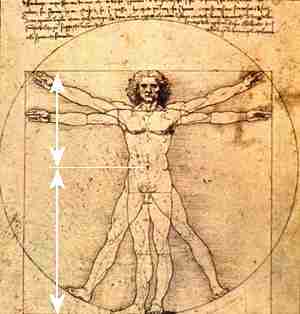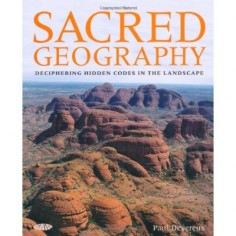 Making your house into a home takes more than a knitted afhgan lying alongside the couch. What makes a domestic structure into a nest is not just about coziness, but alignment.
Making your house into a home takes more than a knitted afhgan lying alongside the couch. What makes a domestic structure into a nest is not just about coziness, but alignment.
The ancient Chinese tradition of Feng shui has perfected this art, but the roots for finding your center and aligning it with the landscape are common to many prehistoric societies, including the ancestors of Europeans.
By aligning our home with the elements, we make it sacred. And it feels really good, no matter your worldview, because it awakens the bodily intelligence.
So says Paul Devereux, archaeologist, consciousness researcher and author of many, many books, including his just published Sacred Geography.
Devereux’s body of work encompasses consciousness, culture and archaeology: pretty much my favorite intersection. Last weekend I attended a weekend seminar by Devereux at the Rhine Institute in North Carolina. I came away with 12 pages of notes, but more than that, I now have an action plan for grounding my home with the landscape.
But before I get into his practical tips, let’s get grounded.
The Embodied Cosmology

We’re wired for certain relationships to our environment due to innate structural aesthetics of the mind.
When these structures aren’t mirrored where we live and work, the result is stress and bodily anxiety, adding to the much lamented separation from nature that has led our world to its present fragile state.
We can do something about this besides recycling our garbage and buying $14 lightbulbs.
The process starts by recognizing when we are out of balance, something that happens to me every single day. I mean, it’s a big world, and it feels like I’m living on the edge of it.
Knowing about my infinite smallness in the scheme of things doesn’t really help.
To remedy this, Devereux intones the wisdom of Buckaroo Bonzai: “Wherever you go, there you are.”
Perceptually, the center of the world is real: it is the body, and the awareness which seemingly emanates from the space between the eyes.
This perceptual reality is an embodied cosmology, and as such, it creates tension in the body when it runs afoul of our scientific paradigm of a near infinite universe.
As it turns out, I’m not tiny: I’m in the thick of it.
The Embodied Landscape
To ease the tension, we can project this embodied worldview into the environment. We are rewarded with opportunities to connect and relax when we do so. This is what we’re designed for; it’s our cognitive heritage. It’s a neurognostic reality.
For example, from my perspective on the ground, the sun actually rises from the eastern horizon. I saw it set behind the Acme grocery store last night too on my way to get some microwavable pretzels.
That’s reality. That’s where we stand.
Well, that’s where I stand anyways.
So it’s not particularly surprising that we can’t find our center and often feel lost and confused. Our culture distances and denies our perception and objectifies a shared reality that has no center. As philosopher Ken Wilber has often warned, “don’t confuse the map for the territory.”
To which Devereux added this last weekend, “You’re not in a maze—you’re in a labyrinth. You can’t get lost.”
It bears repeating: you can’t get lost.
Finding ground isn’t about rejecting science. We don’t have to go live in caves to reconnect with nature, or forget everything that has been discovered beyond the senses with the help of technology.
Rather, we can reconnect with the embodied cosmology. This is what making something sacred is all about: projecting our own sacred center onto the environment we share with everyone else.
To start, we can do this by mapping it onto our living spaces. It all flows from here; the center is within.

3 ways to make your home more sacred:
Set up a ritual hearth. In the old days, all homes had hearths that were the center of the home. Hearth = heart. It’s a focus point for the most public room, and it showcases our connection to the community, kin and landscape. In our culture, the TV often takes this role unconsciously.
Dethrone the TV and set up a simple shelf in the center of the home, and decorate it with your favorite objects, the ones that are steeped in memory and tradition.
Mark the four directions. All cultures, including the indigenous cultures that Europeans derive from, make note of the four directions and imbue them with symbolism. You can place small plaques on the wall, or perhaps have different wallpaper for a certain direction. This aligns the home with the geomagnetic field that surrounds our planet, and courses through our every cell.
Connect with Cyclical Time. Time is not just linear but has a cyclical nature too. We can honor that physically, creating powerful bodily associations that go beyond intellectual understanding.
For example, the sun makes an arc throughout the year that can be mapped anywhere. In the Northern hemisphere, where I live, June 21 marks the farthest North that the sun travels, and December 21 is the farthest South.
Hang a small prism, and mark the created spot on a wall from a window that gets direct light, preferably at the beginning or the end of the day. But you don’t have to use the solstices. Just as easily, mark the spot on the wall on any day that is important to you, such as a birthday or a significant holiday. You can watch the band retreat and approach as the year passes, revealing the cyclical nature of time.
 If you’re interested in exploring more ways to reconnect with the ancient structures of the mind as they relate to landscape and spirituality, check out Paul Devereux’s works, in particular his new book Sacred Geography.
If you’re interested in exploring more ways to reconnect with the ancient structures of the mind as they relate to landscape and spirituality, check out Paul Devereux’s works, in particular his new book Sacred Geography.
Devereux also has republished his book on lucid dreaming that he co-authored with Charlene Devereux – I’ll be reviewing that soon! This work of grounding and finding the center is actually essential to the work of lucid dreaming too…. but that’s another story.
By the way, the first image is a real home in Whales, built by Simon Dale. (CC)
Beautifully articulated. I used to live in a house that had an octagon shaped piano room. This was my bedroom. On each wall I had something representing one of the 8 directions (E, SE, S, SW, W, NW, N, NE.) It was a magical time because I was simultaneously learning about what you’ve written here.
In my current home the walls don’t align with the directions, so I have a round altar table in my office with the 4 elements and other sacred objects. If I connect with this altar daily I feel more balanced and life slows down. If I get caught up in my “to-do” list, though, and forget the altar practice life feels out of hand.
As I read your article I started to wonder what else I might do to integrate these elements into my home. Great food for thought. Thanks Ryan.
Thanks for this report Ryan. I too believe that this is an important area of research for dream studies enthusiasts.
It is possible that some kind of intersection of sacred and ordinary physical geography had taken place in establishing the reputations of the places known from many parts of the Old World for “medicinal” dreams.
Personal “embodied cosmology” sounds interesting.
I am not sure that “Feng shui has perfected this art” to fit the psychology of all peoples. Maybe this as an experimental kind of knowledge where different hypotheses about alignments, bodies, locations, internal arrangements, colors, and so forth may be tested.
Alternatively, it may also be interesting to think of the issues in this area from the point of view of a homeless person.
I seem to find “my ground” when I am on my feet – walking. I intend to keep this practice up for as long as I am able to.
I also appreciate Amy Bruckner’s point about trying to not get caught up in the “to do list”.
Amy – the 8 sided room – how cool. I have numerous collections of sacred objects but no “central place” so that is my next step. Slowing down is really where this is heading… hopefully.
Muhammad, yes there is still much to learn about the intersection of dreaming and sacred sites. I’m reading a fascinating book by Edward Tick right now about Aesclepian healing. powerful stuff. how psychology and topography interact is only now becoming a respectable pursuit in the academy. The new journal Time and Mind is a great new treasure trove that Devereux has helped found: peer reviewed articles about consciousness, archaeology and culture.
Very sorry about misspelling Amy’s name.
Another great article, Ryan. You always provide me food for thought and a way to take action.
Paul Devereux has been popping up in a number of places of late — a few days ago I read an old article of Bob’s that mentioned him and then his name was mentioned in two emails or internet sites the next day — and here you are mentioning him again.
Seems like I need to follow up on him.
thanks Bobbie! yes, Devereux is highly recommended reading regarding dreams and sacred sites.. he’s got a very grounded and empirical approach given this often “airy-fairy” subject matter.